-
 Bitcoin
Bitcoin $116400
-0.36% -
 Ethereum
Ethereum $4033
3.40% -
 XRP
XRP $3.302
-1.26% -
 Tether USDt
Tether USDt $1.000
-0.02% -
 BNB
BNB $796.1
1.67% -
 Solana
Solana $177.8
1.89% -
 USDC
USDC $0.9999
0.00% -
 Dogecoin
Dogecoin $0.2314
4.09% -
 TRON
TRON $0.3381
0.14% -
 Cardano
Cardano $0.7989
1.22% -
 Stellar
Stellar $0.4496
-1.84% -
 Chainlink
Chainlink $20.42
9.42% -
 Hyperliquid
Hyperliquid $41.17
0.88% -
 Sui
Sui $3.914
3.77% -
 Bitcoin Cash
Bitcoin Cash $584.7
1.52% -
 Hedera
Hedera $0.2632
-0.54% -
 Avalanche
Avalanche $24.09
3.40% -
 Ethena USDe
Ethena USDe $1.001
-0.02% -
 Litecoin
Litecoin $123.2
1.33% -
 Toncoin
Toncoin $3.318
-0.04% -
 UNUS SED LEO
UNUS SED LEO $8.984
-0.05% -
 Shiba Inu
Shiba Inu $0.00001323
2.85% -
 Uniswap
Uniswap $10.90
4.41% -
 Polkadot
Polkadot $3.999
3.34% -
 Dai
Dai $1.000
0.01% -
 Cronos
Cronos $0.1630
9.64% -
 Bitget Token
Bitget Token $4.484
0.82% -
 Monero
Monero $272.4
2.44% -
 Pepe
Pepe $0.00001173
6.03% -
 Aave
Aave $290.8
2.88%
How to use VWAP in a reversal pattern? Is the head and shoulders top and bottom effective?
VWAP helps traders gauge crypto prices and identify reversal patterns like head and shoulders, enhancing trading decisions with volume and price data.
Jun 02, 2025 at 06:28 pm
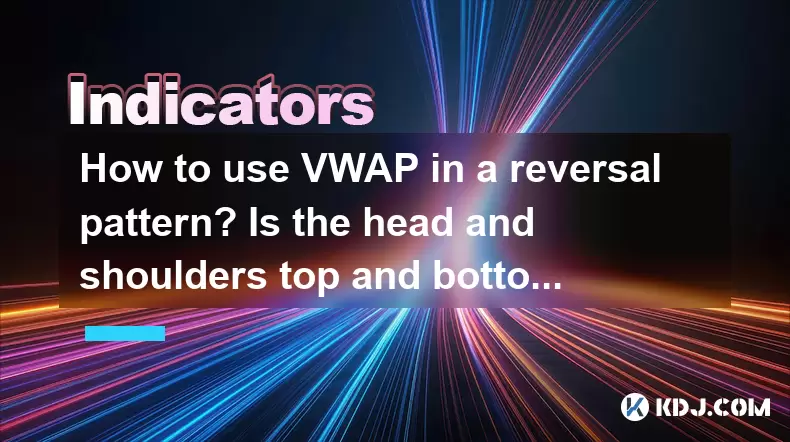
The Volume Weighted Average Price (VWAP) is a widely used technical indicator in the cryptocurrency trading community, often employed to gauge the average price a security has traded at throughout the day, based on both volume and price. It is particularly useful for traders looking to identify potential reversal patterns, such as the head and shoulders top and bottom. This article will delve into how to effectively use VWAP in conjunction with these reversal patterns and assess the effectiveness of the head and shoulders formations in the crypto market.
Understanding VWAP and Its Role in Trading
VWAP is calculated by adding up the dollars traded for every transaction (price multiplied by the number of shares traded) and then dividing by the total shares traded. The formula for VWAP is as follows:
[ \text{VWAP} = \frac{\sum (P_i \times V_i)}{\sum V_i} ]
Where ( P_i ) is the price of the trade and ( V_i ) is the volume of that trade.
In the context of cryptocurrency trading, VWAP serves as a benchmark to determine if a coin is trading at a fair value. If the price of a cryptocurrency is above the VWAP, it is considered overvalued, and if it is below, it is undervalued. Traders often use VWAP to make decisions on entry and exit points, especially in intraday trading.
Identifying Head and Shoulders Patterns
The head and shoulders pattern is a reliable trend reversal pattern that appears in various markets, including cryptocurrencies. This pattern can be identified in two forms: the head and shoulders top and the head and shoulders bottom.
- Head and Shoulders Top: This pattern signals a potential reversal from a bullish to a bearish trend. It is characterized by three peaks, with the middle peak (the head) being the highest and the two outer peaks (the shoulders) being lower and roughly equal in height.
- Head and Shoulders Bottom: Also known as an inverse head and shoulders, this pattern indicates a potential shift from a bearish to a bullish trend. It features three troughs, with the middle trough (the head) being the lowest and the two outer troughs (the shoulders) being higher and roughly equal in depth.
Using VWAP with Head and Shoulders Top
To use VWAP effectively with a head and shoulders top pattern, traders should follow these steps:
- Monitor the Price Relative to VWAP: As the price approaches the first shoulder, observe whether it trades above or below the VWAP. If the price is consistently above the VWAP during the formation of the left shoulder, it suggests that the market is still in a bullish phase.
- Watch for the Head Formation: As the price moves to form the head, it should peak higher than the left shoulder. If the price continues to trade above the VWAP during this peak, it may indicate strong bullish momentum. However, if the price starts to dip below the VWAP during the formation of the head, it could be a warning sign of weakening bullish strength.
- Confirm the Right Shoulder: The formation of the right shoulder should see the price fall back below the VWAP. This is a critical point where traders should be alert for a potential reversal. If the price fails to break above the VWAP during the formation of the right shoulder, it strengthens the bearish reversal signal.
- Neckline Break: The final confirmation of the head and shoulders top pattern comes when the price breaks below the neckline, which is drawn by connecting the lows of the two troughs between the shoulders and the head. A decisive break below the neckline, accompanied by high volume, is a strong indicator of a bearish reversal.
Using VWAP with Head and Shoulders Bottom
For the head and shoulders bottom pattern, the process is reversed but follows a similar logic:
- Observe the Price Relative to VWAP: As the price forms the left shoulder, it should be trading below the VWAP, indicating bearish sentiment. If the price is consistently below the VWAP, it suggests that the market is still in a bearish phase.
- Watch for the Head Formation: The price should then move to form the head, which is lower than the left shoulder. If the price remains below the VWAP during this trough, it confirms the bearish trend. However, if the price starts to move above the VWAP during the formation of the head, it could signal a weakening bearish trend.
- Confirm the Right Shoulder: The formation of the right shoulder should see the price rise above the VWAP. This is a key moment where traders should be alert for a potential bullish reversal. If the price continues to trade above the VWAP during the formation of the right shoulder, it strengthens the bullish reversal signal.
- Neckline Break: The final confirmation of the head and shoulders bottom pattern occurs when the price breaks above the neckline, which is drawn by connecting the highs of the two peaks between the shoulders and the head. A decisive break above the neckline, accompanied by high volume, is a strong indicator of a bullish reversal.
Assessing the Effectiveness of Head and Shoulders Patterns in Crypto
The effectiveness of head and shoulders patterns in the cryptocurrency market can vary due to the high volatility and rapid price movements often seen in crypto trading. However, when these patterns are combined with indicators like VWAP, they can provide more reliable signals.
- Volatility and Volume: Cryptocurrencies are known for their high volatility, which can sometimes lead to false signals. However, when a head and shoulders pattern is accompanied by significant volume, especially during the neckline break, it increases the reliability of the pattern.
- Timeframe: The effectiveness of the head and shoulders pattern can also depend on the timeframe being analyzed. Patterns that form over longer timeframes, such as daily or weekly charts, tend to be more reliable than those on shorter timeframes like hourly charts.
- Confirmation with Other Indicators: While VWAP is a powerful tool, combining it with other technical indicators such as the Relative Strength Index (RSI) or Moving Averages can further enhance the reliability of the head and shoulders pattern.
Practical Example of Using VWAP with Head and Shoulders Top
To illustrate how to use VWAP with a head and shoulders top pattern, let's consider a hypothetical scenario with Bitcoin (BTC).
- Left Shoulder Formation: Bitcoin's price forms a peak at $50,000, trading above the VWAP, which is at $48,000. This indicates bullish sentiment.
- Head Formation: The price then rises to form a head at $55,000, still trading above the VWAP, which has moved to $50,000. However, during the formation of the head, the price briefly dips below the VWAP, signaling potential weakness.
- Right Shoulder Formation: The price falls back to form a right shoulder at $50,000, now trading below the VWAP, which has shifted to $52,000. This indicates that the bullish momentum is waning.
- Neckline Break: The neckline is drawn at $45,000, connecting the lows between the left shoulder and the head. When the price decisively breaks below this neckline with high volume, it confirms the bearish reversal signal.
Practical Example of Using VWAP with Head and Shoulders Bottom
For an example of using VWAP with a head and shoulders bottom pattern, let's consider a hypothetical scenario with Ethereum (ETH).
- Left Shoulder Formation: Ethereum's price forms a trough at $2,000, trading below the VWAP, which is at $2,200. This indicates bearish sentiment.
- Head Formation: The price then drops to form a head at $1,800, still trading below the VWAP, which has moved to $2,100. However, during the formation of the head, the price briefly moves above the VWAP, signaling potential bullish strength.
- Right Shoulder Formation: The price rises to form a right shoulder at $2,000, now trading above the VWAP, which has shifted to $1,900. This indicates that the bearish momentum is waning.
- Neckline Break: The neckline is drawn at $2,300, connecting the highs between the left shoulder and the head. When the price decisively breaks above this neckline with high volume, it confirms the bullish reversal signal.
Frequently Asked Questions
Q: Can VWAP be used on different timeframes for head and shoulders patterns?
A: Yes, VWAP can be applied to various timeframes when analyzing head and shoulders patterns. However, the effectiveness of the pattern may vary depending on the timeframe. Longer timeframes, such as daily or weekly charts, tend to provide more reliable signals compared to shorter timeframes like hourly charts.
Q: How does the volume affect the reliability of head and shoulders patterns?
A: Volume plays a crucial role in confirming head and shoulders patterns. A significant increase in volume during the neckline break enhances the reliability of the pattern, indicating strong market participation and a higher likelihood of a successful reversal.
Q: Are there other technical indicators that can be used alongside VWAP and head and shoulders patterns?
A: Yes, other technical indicators such as the Relative Strength Index (RSI), Moving Averages, and the MACD can be used in conjunction with VWAP and head and shoulders patterns to provide additional confirmation and increase the accuracy of trading signals.
Q: Can head and shoulders patterns be used for all cryptocurrencies?
A: While head and shoulders patterns can be applied to all cryptocurrencies, their effectiveness may vary due to differences in market liquidity and volatility. More liquid cryptocurrencies like Bitcoin and Ethereum tend to exhibit more reliable patterns compared to smaller, less liquid altcoins.
Disclaimer:info@kdj.com
The information provided is not trading advice. kdj.com does not assume any responsibility for any investments made based on the information provided in this article. Cryptocurrencies are highly volatile and it is highly recommended that you invest with caution after thorough research!
If you believe that the content used on this website infringes your copyright, please contact us immediately (info@kdj.com) and we will delete it promptly.
- SHIB Price, Meme Coin Mania, and the 250x Potential Hunt
- 2025-08-09 16:30:13
- SOL, ETFs, and AI: Crypto's Triple Threat Sensation!
- 2025-08-09 17:10:12
- Tokenized Stock on Solana: SOL Price Reacts to Exodus's Bold Move
- 2025-08-09 17:10:12
- Cardano, Mutuum Finance, Millionaires 2025: A New Wave of Crypto Fortunes?
- 2025-08-09 17:50:12
- Meme Coins on Blockchains in 2025: Hype or the Future?
- 2025-08-09 16:50:11
- World Liberty Financial, Public Listing, and WLFI Tokens: A New York Minute on the Trump-Backed Crypto Venture
- 2025-08-09 16:50:11
Related knowledge

What does it mean when the Triple Moving Average (TRIX) turns downward but the price doesn't fall?
Aug 09,2025 at 12:42pm
Understanding the Triple Moving Average (TRIX) IndicatorThe Triple Moving Average, commonly known as TRIX, is a momentum oscillator designed to filter...

What does it mean when the Williams' oscillator repeatedly hits bottoms but fails to rebound?
Aug 09,2025 at 09:28am
Understanding the Williams %R OscillatorThe Williams %R oscillator, developed by Larry Williams, is a momentum indicator used in technical analysis to...
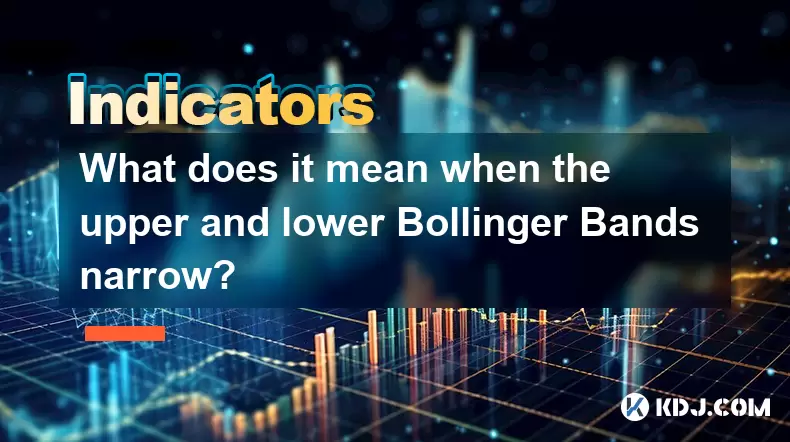
What does it mean when the upper and lower Bollinger Bands narrow?
Aug 09,2025 at 03:00pm
Understanding Bollinger Bands in Cryptocurrency TradingBollinger Bands are a widely used technical analysis tool in the cryptocurrency market, develop...
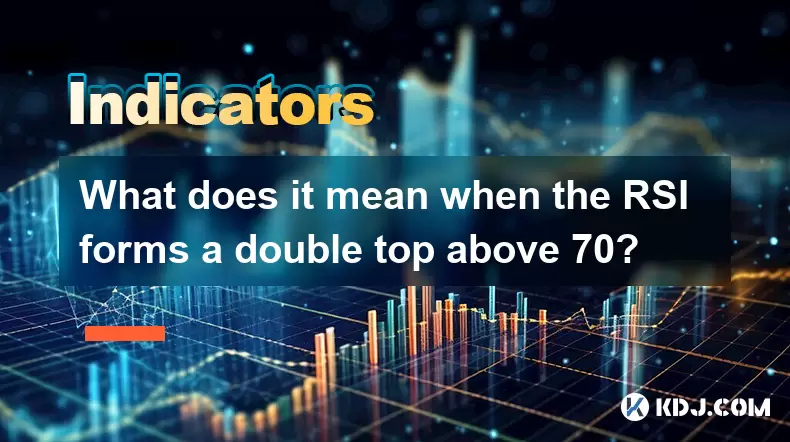
What does it mean when the RSI forms a double top above 70?
Aug 09,2025 at 05:50pm
Understanding the RSI and Overbought ConditionsThe Relative Strength Index (RSI) is a momentum oscillator that measures the speed and change of price ...
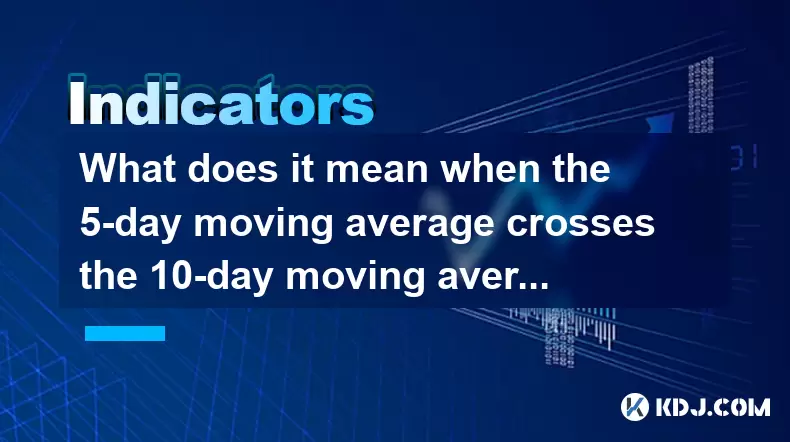
What does it mean when the 5-day moving average crosses the 10-day moving average but the 20-day moving average remains upward?
Aug 09,2025 at 03:35pm
Understanding Moving Averages in Cryptocurrency TradingMoving averages are foundational tools in technical analysis, especially within the cryptocurre...
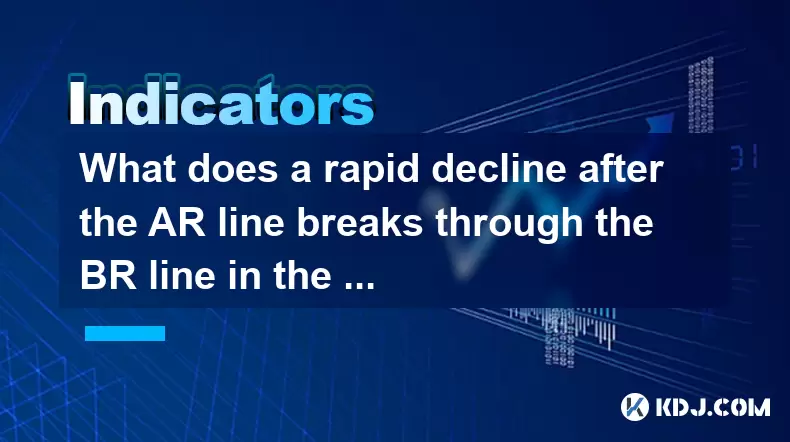
What does a rapid decline after the AR line breaks through the BR line in the ARBR indicator indicate?
Aug 09,2025 at 04:42pm
Understanding the ARBR Indicator ComponentsThe ARBR indicator is a technical analysis tool that combines two oscillators: the AR (Amplitude Ratio) and...

What does it mean when the Triple Moving Average (TRIX) turns downward but the price doesn't fall?
Aug 09,2025 at 12:42pm
Understanding the Triple Moving Average (TRIX) IndicatorThe Triple Moving Average, commonly known as TRIX, is a momentum oscillator designed to filter...

What does it mean when the Williams' oscillator repeatedly hits bottoms but fails to rebound?
Aug 09,2025 at 09:28am
Understanding the Williams %R OscillatorThe Williams %R oscillator, developed by Larry Williams, is a momentum indicator used in technical analysis to...

What does it mean when the upper and lower Bollinger Bands narrow?
Aug 09,2025 at 03:00pm
Understanding Bollinger Bands in Cryptocurrency TradingBollinger Bands are a widely used technical analysis tool in the cryptocurrency market, develop...

What does it mean when the RSI forms a double top above 70?
Aug 09,2025 at 05:50pm
Understanding the RSI and Overbought ConditionsThe Relative Strength Index (RSI) is a momentum oscillator that measures the speed and change of price ...

What does it mean when the 5-day moving average crosses the 10-day moving average but the 20-day moving average remains upward?
Aug 09,2025 at 03:35pm
Understanding Moving Averages in Cryptocurrency TradingMoving averages are foundational tools in technical analysis, especially within the cryptocurre...

What does a rapid decline after the AR line breaks through the BR line in the ARBR indicator indicate?
Aug 09,2025 at 04:42pm
Understanding the ARBR Indicator ComponentsThe ARBR indicator is a technical analysis tool that combines two oscillators: the AR (Amplitude Ratio) and...
See all articles

























































































